Renegades | James Jean on Bringing a Sketch to Life
Award-winning visual artist James Jean celebrates a new collaboration with Din Tai Fung this Lunar New Year!
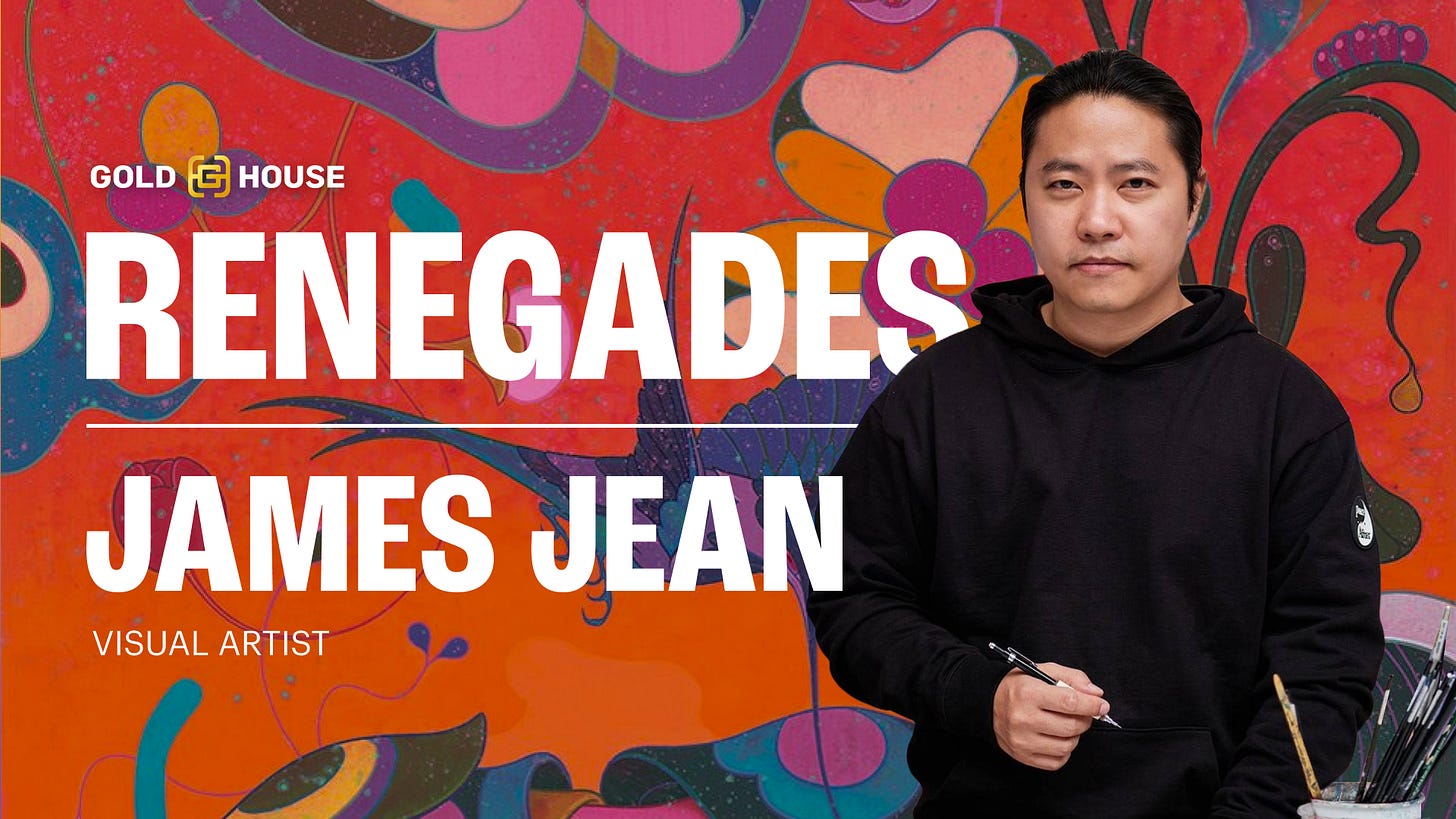
Welcome to Renegades, Gold House’s editorial series spotlighting Asian Pacific leaders and creatives who are carving their own paths and defying stereotypes along the way.
This week features James Jean, 6-time Eisner-award winning visual artist. Born in Taiwan and based in Los Angeles, James began his career as an illustrator, designing uniquely striking and memorable comic book covers, album covers, and movie posters for major collaborators including Blade Runner 2049, My Chemical Romance, the Batgirl comic book series and many more. His work has since blossomed into a focus on the fine arts, and has been exhibited in galleries around the world, from Canada to China and beyond.
James talks to us about how collaborations push his work in new directions, the influence of artificial intelligence in the arts, and the inspiration behind his latest Lunar New Year collaboration with Din Tai Fung. Learn more about how you can join in the Lunar New Year celebration through James’ collaboration with Din Tai Fung here!
What did you want to be when you were growing up and how does that compare to where you are now?
When I was 13, I was obsessed with becoming a comic book artist. This obsession led me to attend the School of Visual Arts in New York, one of the few schools with a dedicated cartooning program. However, once I was exposed to the foundation program—which included painting, sculpture, and photography—a whole new world opened up, and I decided I wanted to become a painter. After graduating, I struggled to find work and ended up doing covers for major comic book companies almost by accident. Now, I’m mostly focused on painting, sculpture, and printmaking. So, not too far off from my childhood dreams!
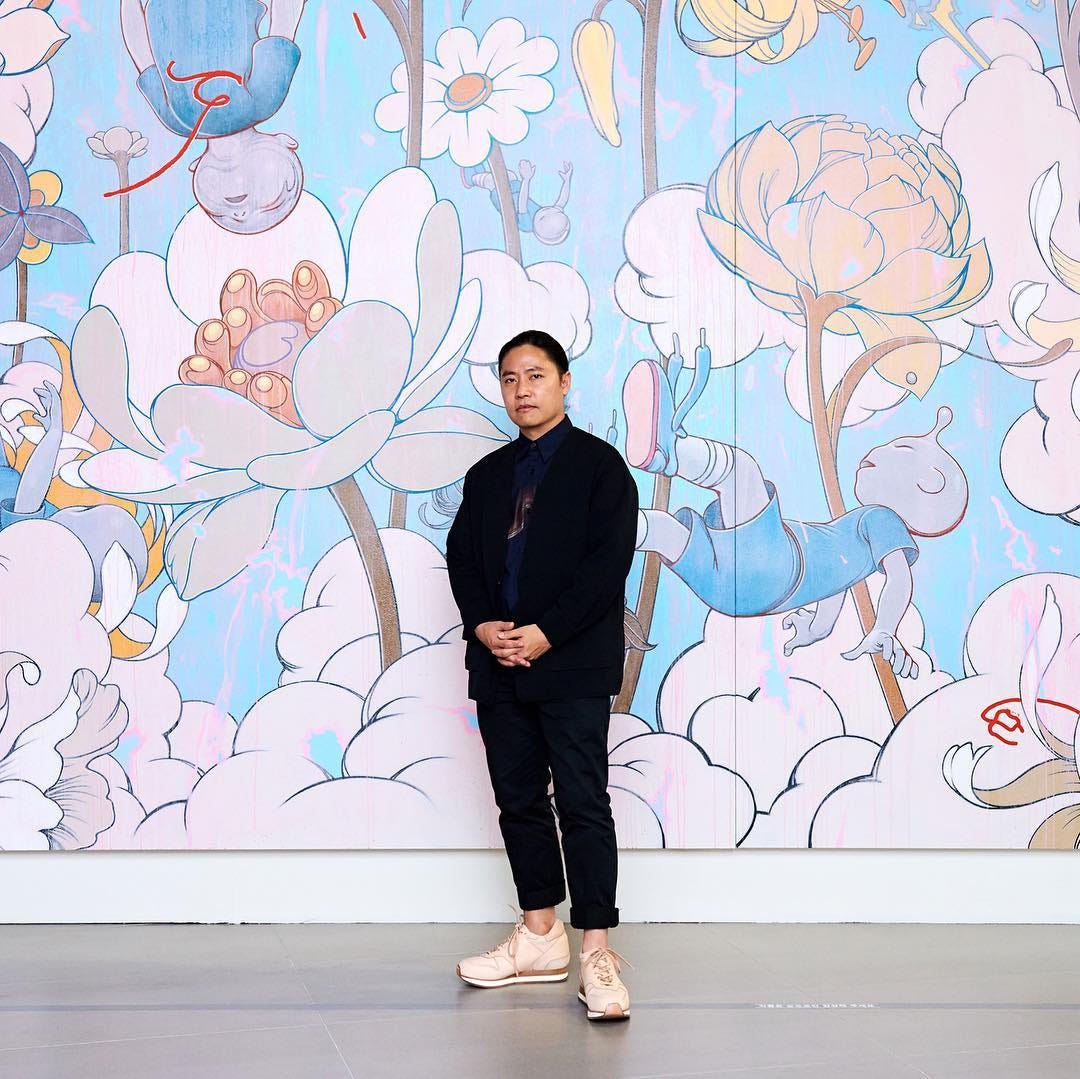
With a bit of deco in the colors, romanticism in the shapes, and Asian futurism and fantasy in the world-building, your work is truly singular. What were some of the early inspirations that led you into the visual arts? Are there certain pivotal artists or pieces of work that galvanized your distinct style?
Many early influences still linger in my work today, such as the woodblock prints of Yoshitoshi, Shanghai advertising posters, mezzotints by Gautier D’Agoty, the comics of Chris Ware, and paintings by Antonio Lopez and Vincent Desiderio, just to name a few. What ties all of these varied inspirations together is a focus on drawing and composition, as well as a reverence for narrative. I was also drawn to the Vienna Secession movement, which connected many disciplines, from design to art to architecture.
Now that I’ve been working for some time, I can see how these influences have cohered into what I create today, even though they seemed undefined and scattered during the first half of my career. It took about 15 years before everything started to make sense. In the artwork I created for Din Tai Fung, I wanted it to feel of its time while also being timeless. There’s an obvious influence from animation and contemporary character design, but also from the vintage posters and prints I mentioned earlier, as well as the work of Giuseppe Castiglione (郎世寧), an Italian missionary in China during the Qing dynasty, who fused Chinese and European techniques.
You’ve designed striking and unforgettable works of art across a variety of industries including comic book covers for Fables and Batgirl, film posters for Blade Runner 2049, The Shape of Water and Everything Everywhere All at Once, and album covers for The Donnas, BTS, and more. How do you decide what types of projects to take on, and further, how to tackle such a diverse array of needs while staying true to your own art style and aesthetic?
I enjoy collaborations because they force me to problem-solve and make connections between disparate elements and ideas. Those constraints can be liberating and push me in new directions. Each project has the potential to reach new audiences and allows me to communicate with more people than I could through a gallery show once a year. At the core, I love food, film, and music, so it’s a real joy to contribute to the culture in a way that feels organic and authentic.
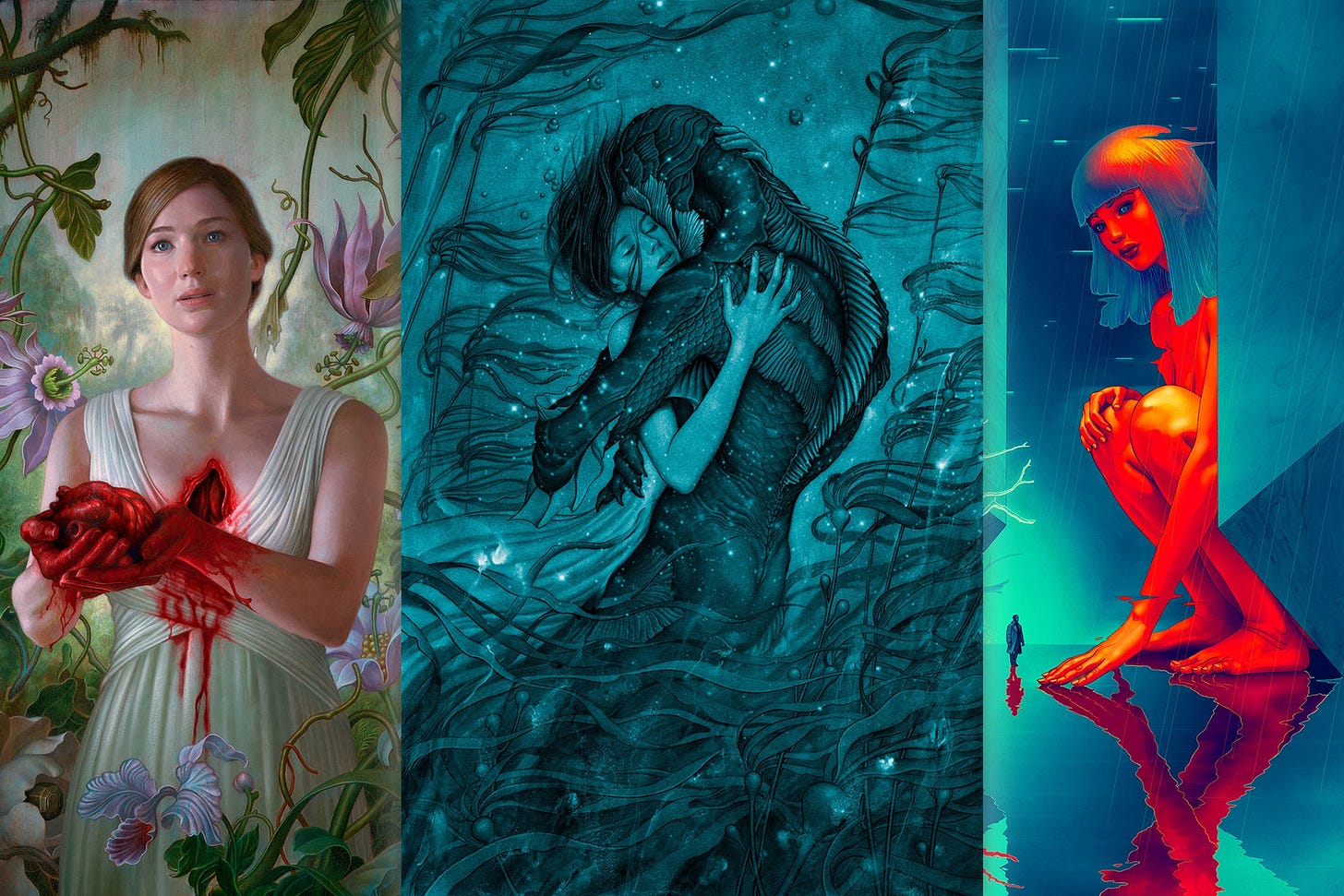
In your most recent show entitled Meadowlark, which showcased at CICA (Centre for International Contemporary Art) in Vancouver in 2024, you touched upon how the work reflects your “sense of dual cultures” that have left you with a “sense of dual loss.” What propels this internal tug-of-war?
There’s always an internal war brewing. Making art is an escape from the daily concerns of life—a way to create objects of semi-permanence to fight against the inevitable decline and decay of the body. With globalization and the fracturing of societies, many people struggle to feel a true sense of belonging. Though I have ties to both Asia and the U.S., I often feel disconnected from both. Perhaps this is why I turn inward and focus on creating, as a rebellion against language and borders.
You explore not only a variety of creative territories but also diverse, expressive mediums, showcasing colorful and dimensional themes that flow effortlessly between tools such as Procreate, charcoal, pencil, paint, sculptures, short film and beyond. Do you find there’s a certain medium you prefer working with or do you let the creative needs of the project dictate the medium?
It all stems from the sketch. At the heart of everything is the drawing—graphite threads that connect the mind’s eye with reality. Through drawing, I can use digital tools, machines, and various fabrication techniques to turn initial ideas into physical materials, whether in steel, wood, glass, fabric, or paper. The magic of turning something imagined into something tangible is a joy I treasure, and it’s even more rewarding if viewers are baffled by how it was made.
The role of new technology and its impact on the arts has long since been a territory of spirited debate, from the invention of the camera, to the printing press, to artificial intelligence today. As an artist celebrated not only for your unique POV but also for your ability to experiment with new tools, where do you see the intersection of AI and the visual arts heading over the next few years?
Painting will always retain its own magic and power, but the influence of AI will be undeniable, as it will create complementary and contrarian responses. AI will alter our taste and visual discernment, and the glut of certain kinds of imagery will create a new hierarchy. I see it as AI pollution: a tsunami of images, video, and content that will poison and crowd our minds with visual garbage optimized for engagement. As a response, it will take more effort to produce art that leaves us feeling inspired and cleansed from these corruptive forces.
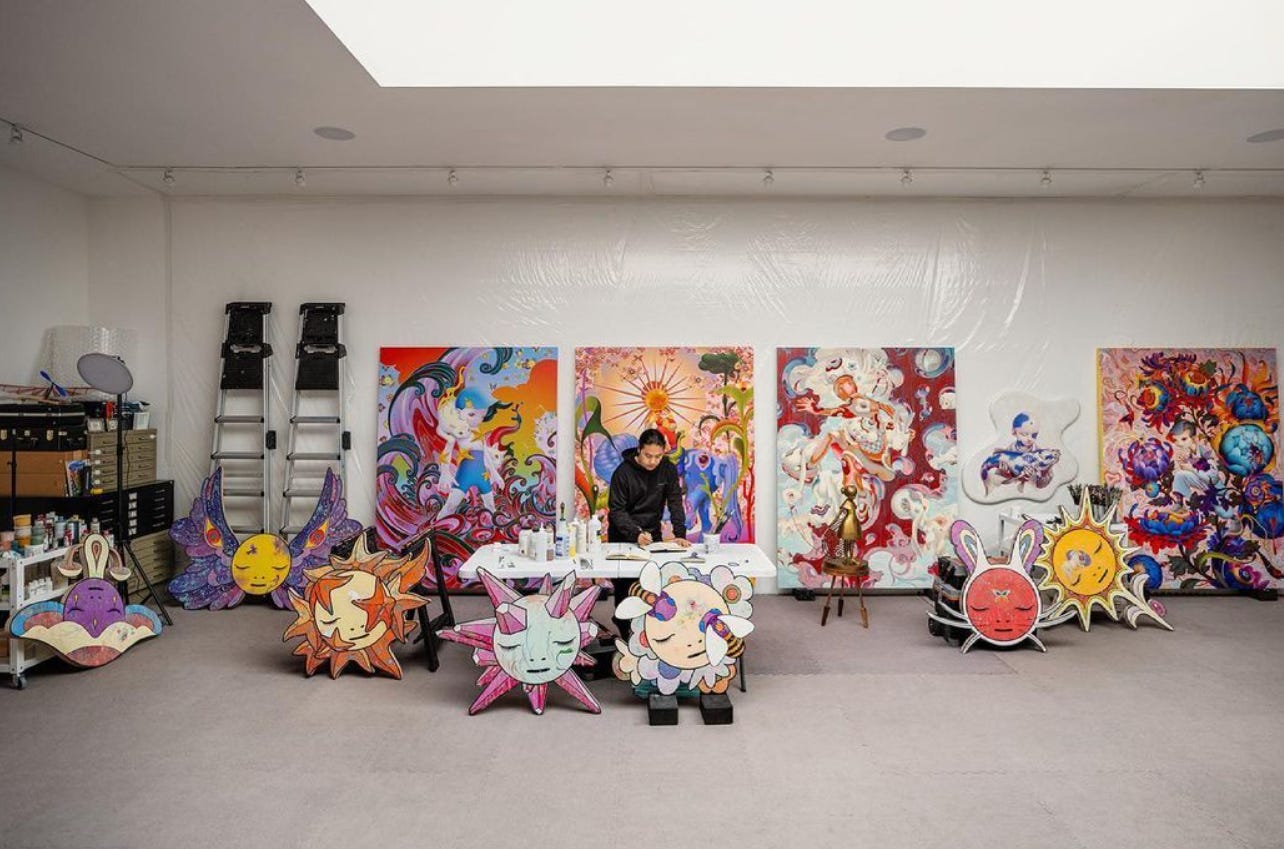
Though the US is still the largest art market in the world, the Japanese market is considered to be growing the fastest. You’ve talked a bit about how you’re currently living between Los Angeles and Japan, straddling both of these major centers for arts; what do you feel is driving the growth of art consumption in Asia and specifically in Japan? How do you find US and Asian markets differ?
Asia continues to be a huge driver of growth in the contemporary art market, especially for younger artists, though many Asian collectors still look for safety in the blue chip market. Currently, I’m planning to show in Southeast Asia for the first time next year. As for Japan in particular, I think that Japan produces some of the best artists in the world, even though the country lacks the institutional/donation model that has consecrated so much art in the Western world and has driven values to extreme degrees. Not to be too reductive, but in Asia, the influence of pop culture and animation, reflected in the work of Takashi Murakami and Yoshitomo Nara, has certainly influenced generations of artists, as collectors seem to resonate with these familiar tropes and images. Nostalgia has become a powerful factor in collecting as well. Ultimately, I have no idea what I’m talking about, and conditions change from moment to moment. It’s important to trust one’s intuition and not to drown in the flow of culture.
As we approach Lunar New Year, you’re celebrating a new collaboration with Din Tai Fung that we can’t wait to see. Any other major projects coming down the line that we should be looking out for? What’s next, new, and exciting for you and your work!
I’ve been going to Din Tai Fung in Arcadia since the early 2000s. Since moving to Los Angeles in 2003, I’ve become friends with the city’s chefs and restaurateurs, contributing my art to notable restaurants locally and abroad. I love food, the stories behind the flavors, and the experiences that unfold over an exceptional meal. Collaborating with Din Tai Fung celebrates our shared cultural roots and traditions. One character holds a goldfish, symbolizing abundance, while another holds a lion dance puppet, representing tradition. Flanking them are flowers named after snakes, like the snake gourd flower and snake’s head fritillary, alongside fantastical flora. In the center sits the coveted Xiao Long Bao. Swirling around are waves of dough, symbolizing transformation into dumpling wrappers and noodles, tying all the elements together.
As for future projects, I’m working on fabricating a large fused glass pavilion that should be completed this year. Eventually, people will be able to walk inside and be surrounded by my art rendered entirely in glass—a groundbreaking sculpture that pushes the boundaries of engineering, architecture, and glassmaking.
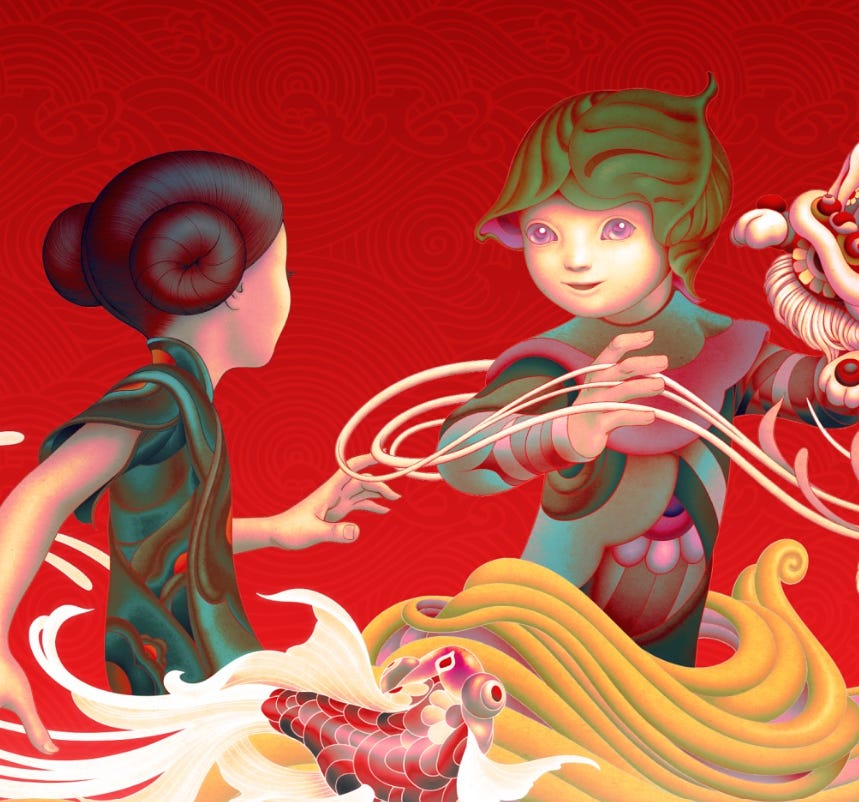
Lightning Round
Morning Routine: Taiwanese loose leaf tea
Last Book You Read: Klara and the Sun by Kazuo Ishiguro
Favorite Movie Poster: Ghanain hand-painted movie posters!
Rising Asian Pacific Name to Watch: Ichiko Aoba
Dream Vacation Destination: Neo Tokyo
Thank you for reading Renegades!